Transporting the Dead: A History of Hearses and other Funerary Conveyances
Share
Laurel Hill East was founded in 1836, which means steam-powered rail travel was still in its infancy, and mass-produced automobiles were still some 70 years away. What’s more, the cemetery was purposefully placed three miles outside the city limits to escape the noise and crowding which plagued Victorian Philadelphia.
In other words, getting here for a funeral took some creativity.
For a time, funeral processions would arrive via steamboat on the Schuylkill River. Before the city expanded out to engulf the cemetery and its surrounding areas, there were docking points as well as ramps which led from the river all the way up to the cemetery grounds. There was also a Laurel Hill train station which used to be located at the north end of the cemetery.
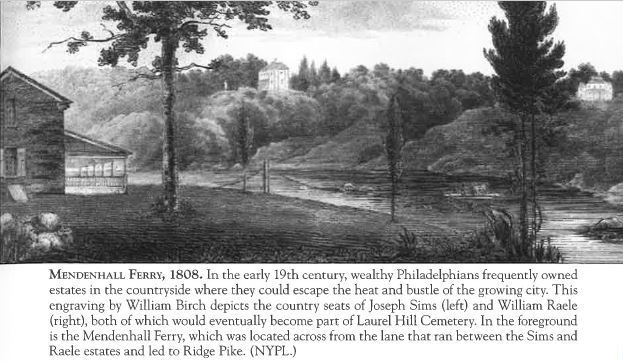
Otherwise, mourners could arrive via horse-drawn carriages in a procession which would, of course, be led by a hearse. But what did hearses look like back in the 19th century, and how have they changed over the years?
Let’s take a look at hearses and other means of funeral conveyance from years past.
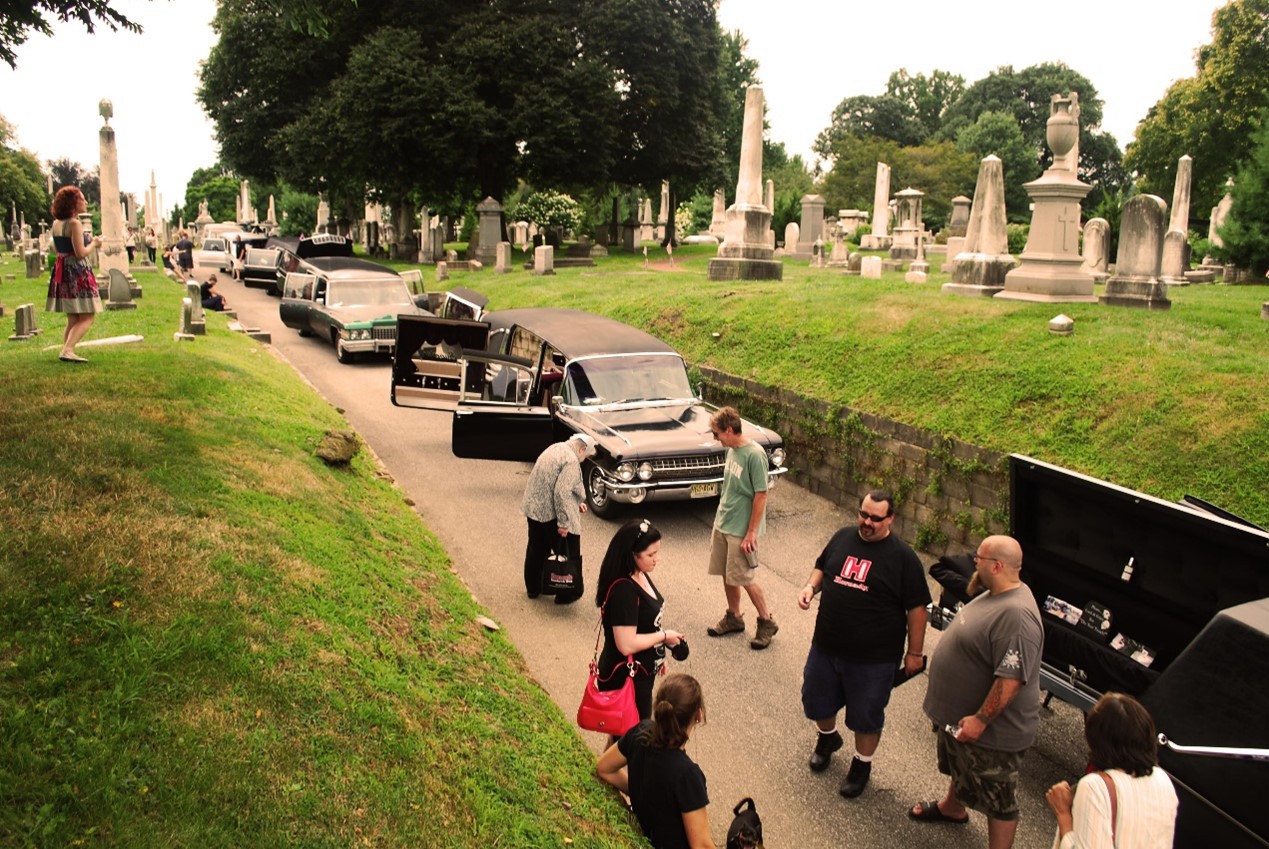
origins of the word
The term “hearse” is derived from the French word “herse,” which means “harrow” – a farming tool used to even out soil. How did a funeral coach get to be named after farming equipment? At the time, coffins were topped with a spiked, metal framework which would help support the pall, or perhaps lit candles. Because those spikes resembled a harrow, the word herse slowly came to refer to the vehicle transporting the casket. Over the years, the spelling changed to hearse.
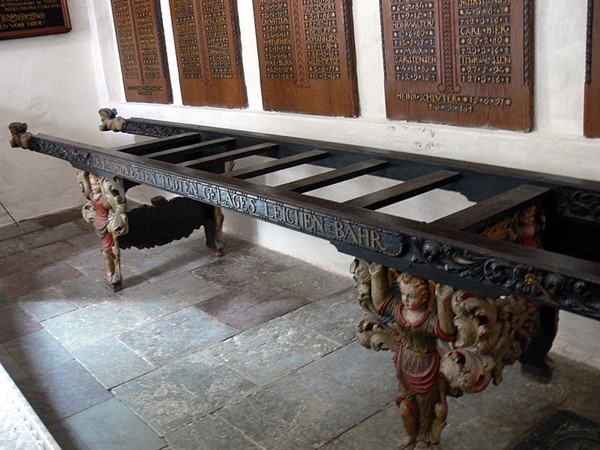
Hand drawn hearse
Before horse-drawn hearses came into wide use, most funerals relied on some type of bier – a flat, framed platform which was used to transport either a shrouded body, or a body in a casket. Examples of funeral biers can be found dating back to ancient times. The platform usually had handrails along either side, so the mourners or undertakers could easily carry the bier to the burial place.
Early biers had no side walls or covering, but as the years went on, more elaborate hand-drawn hearses came into style. As a result, it soon became necessary to add wheels, as the more intricate designs became quite heavy.
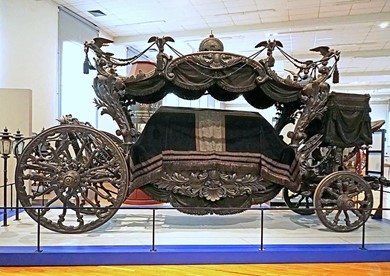
Horse drawn hearse
Beginning in the 17th century, it became less practical to carry or push the bier by hand, so horse-drawn hearses came into fashion… and stayed there for a very long time! The horse-drawn hearse reigned as the default funeral conveyance for over 300 years. Because horses had more hauling power, hearses could be made more elaborate, decorative, and heavy.
Carved wooden hearses with heavy drapery and ornamentation could be seen carrying the wealthy to their final resting places. Metal hearses later came into use around the time that metal caskets were being produced.
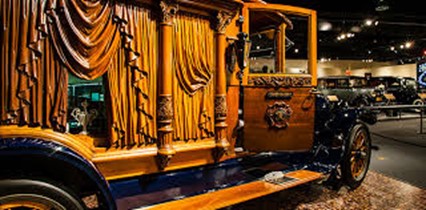
Motorized Hearse
It wasn’t until the 1920s that the horse-drawn hearse was unseated by motorized cars. The idea of a motorized hearse was slow to catch on, so even though there were mass-produced funeral vehicles available as early as 1909, people still opted for the horse-drawn option for another decade or so.
The first fully motorized funeral procession was that of Wilfrid A. Pruyn, a Chicago cab driver. The car was constructed by taking a horse-drawn hearse and setting it atop a bus chassis. While this new vehicle certainly drew attention, it cost nearly four times as much as the horse-drawn hearses that were in wide use at the time.
Over time, the price of combustion engines came down, and funeral directors began to realize that motorized hearses would effectively let them perform more funerals per day.
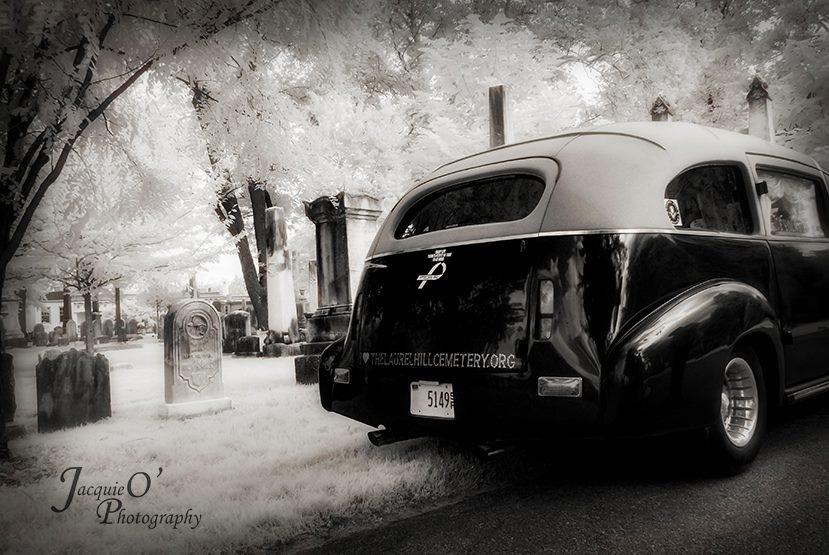
Motorized hearses continued to gain popularity after World War I. Styles changed over the years from the ornate Victorian coach, to a more Art Deco look in the 30s, to limousine style cars, to the leather-topped landau style which can still be seen on the roads today.

A 1911 letter from the Laurel Hill Superintendent allowing automobiles access to the grounds because “so far they do not appear to have developed the same appetite for shrubbery and grass that the horse is noted for.”
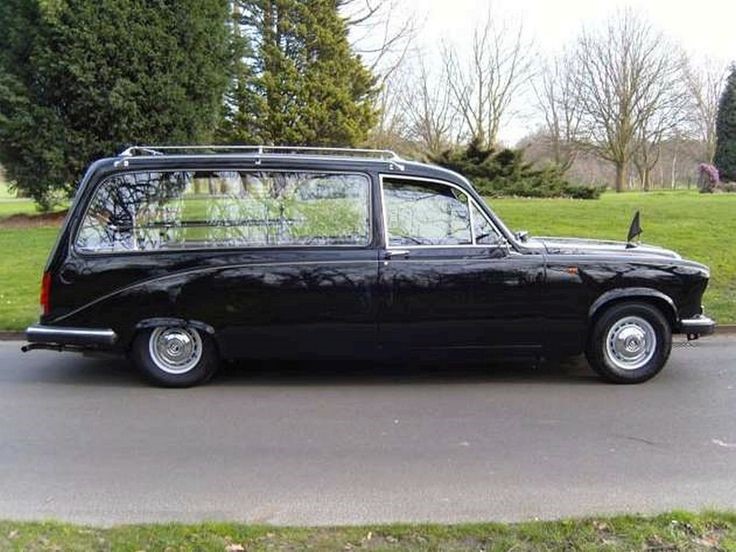
Modern Hearses
Where a person lives (or dies, actually), has a lot to do with determining the style of their final ride. Here in the U.S., hearses tend to be manufactured by luxury brands like Cadillac, Mercedes, or Lincoln. The rear portion of the hearse will either have no windows, heavily tinted windows, or draped windows.
In Europe, they have a different idea. They like the rear portion of their hearses to have lots of clear glass so that the casket of the deceased can be on display.
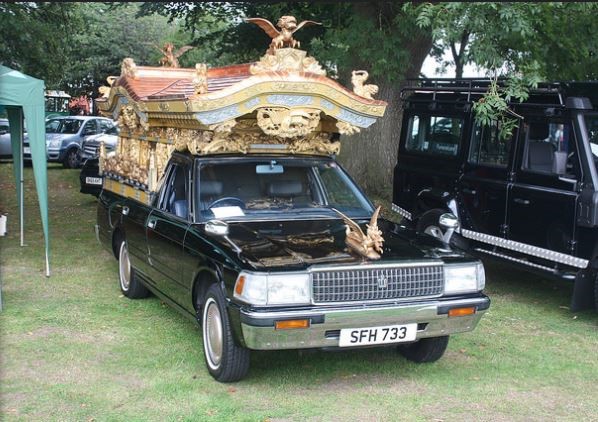
In Japan, hearses are modified to look like Buddhist temples.
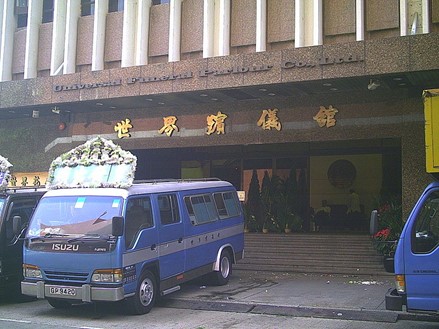
In Hong Kong, companies like Isuzu and Ford make hearses.

Other Methods of Funerary Transport
Funeral Trolley
Sometimes, rail travel proved to be the best way to move a body and its mourners from the city to rural cemetery. A train or trolley would be specially outfitted to transport a coffin in one section, and the mourners in another. Many large cities made use of funeral trains – most notably London and Chicago. Although there are also examples of funeral trolleys locally. Mount Moriah cemetery has the remains of a funeral trolley rail close to their gatehouse.
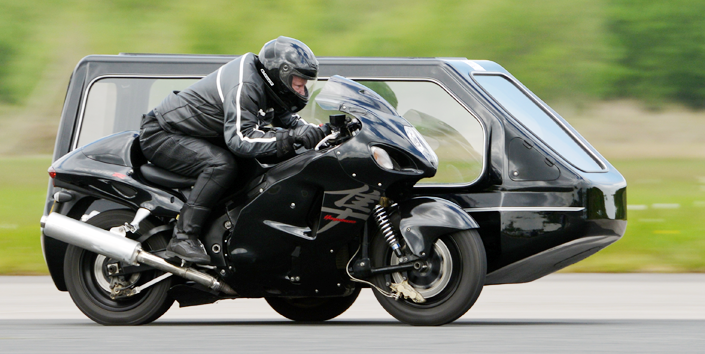
Motorcycle Hearse
Motorcycles can be fitted with special side cars meant to carry a casket. They are very popular for biker funerals.
Air Hearse
Yes, there is such a thing as an air hearse, but that name might be a bit misleading. You might be picturing a flying hearse, but in reality, the term refers to an aircraft which has been specially constructed to transport the dead. Repatriation of remains is a surprisingly large business… and this therefore seems like a good time to remind you to be careful whenever you vacation.

In this letter, dated 1911 from the Laurel Hill archives, the superintendent imagines a future where funeral processions are made up of airplanes